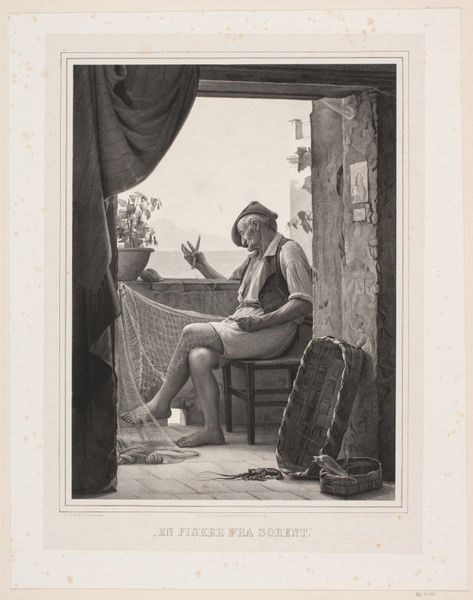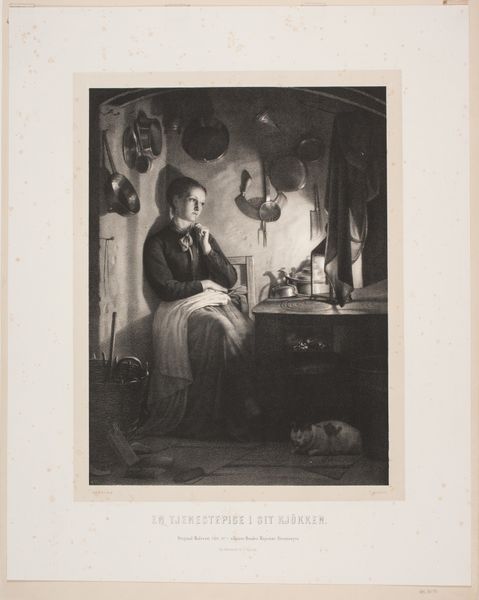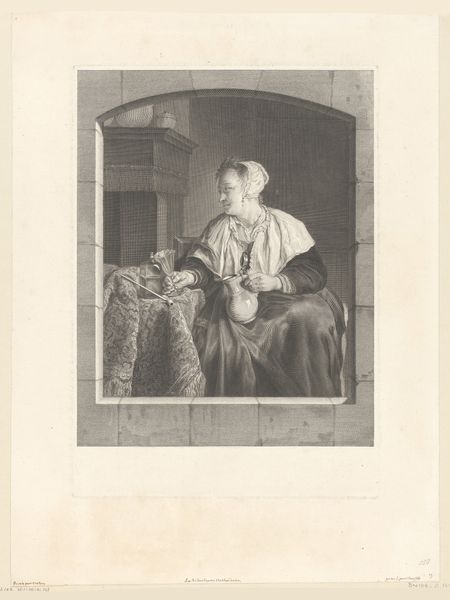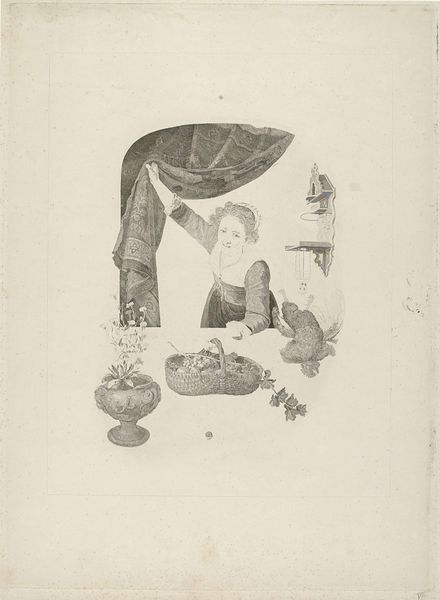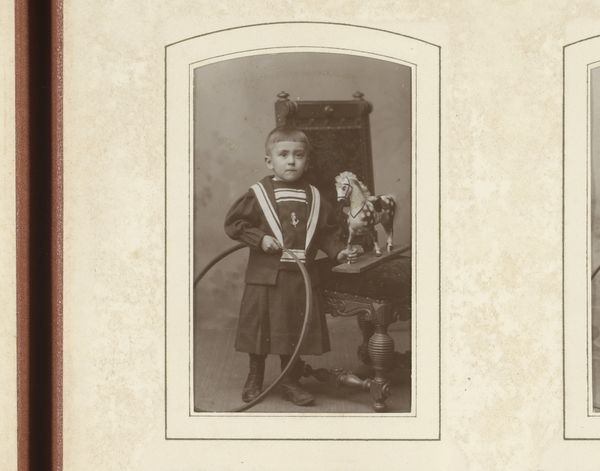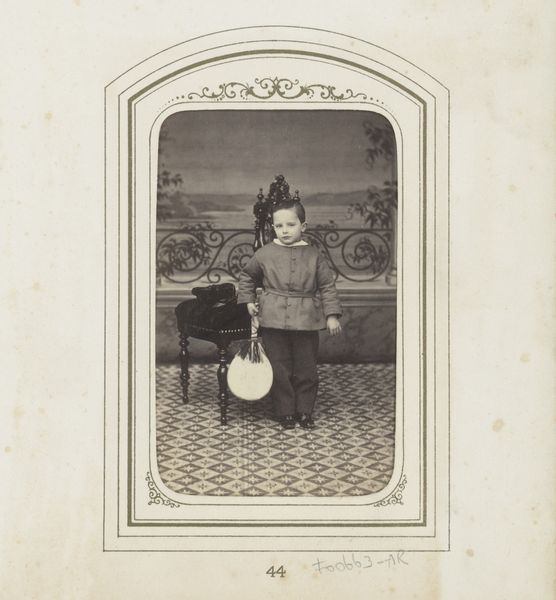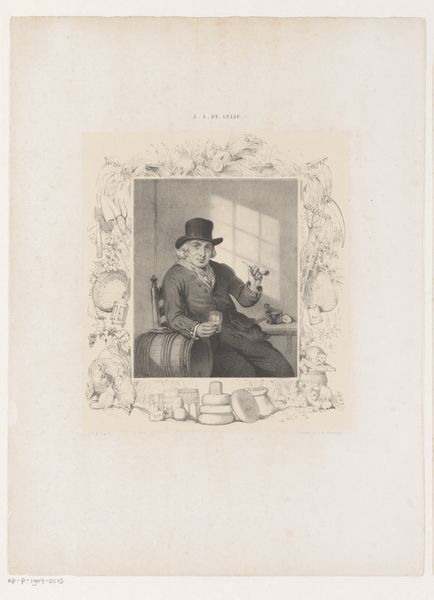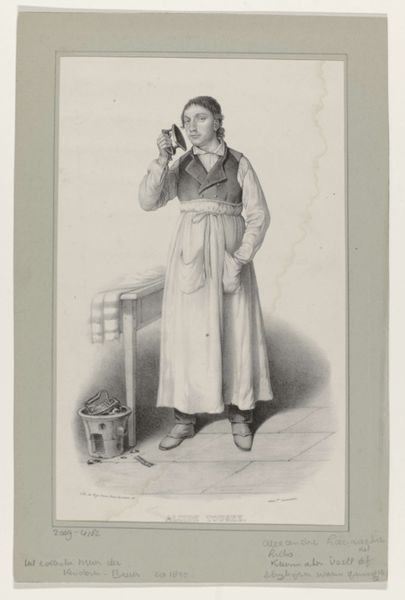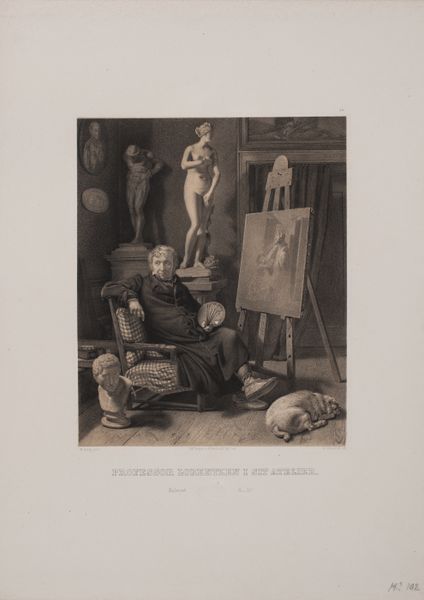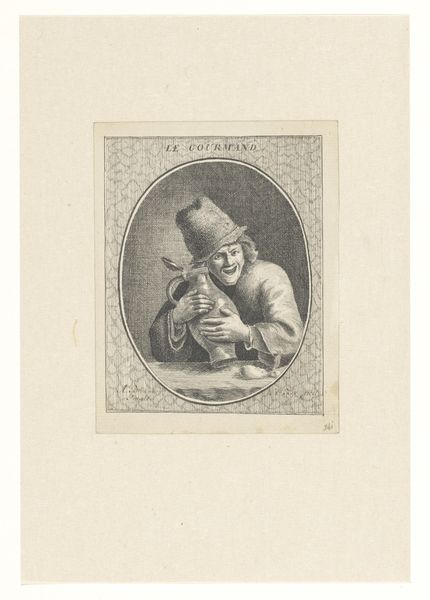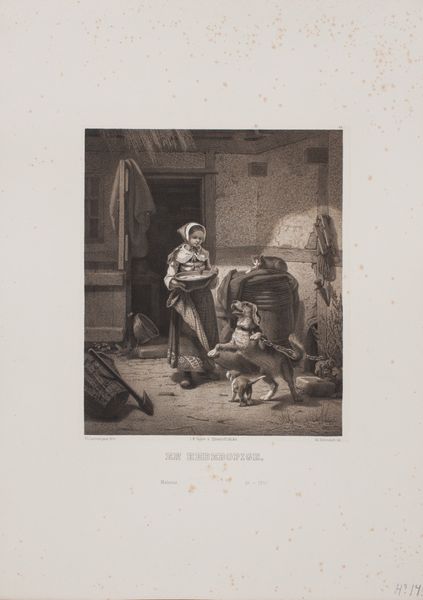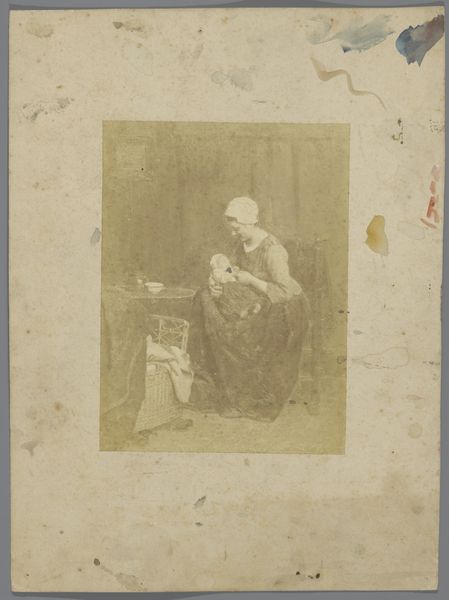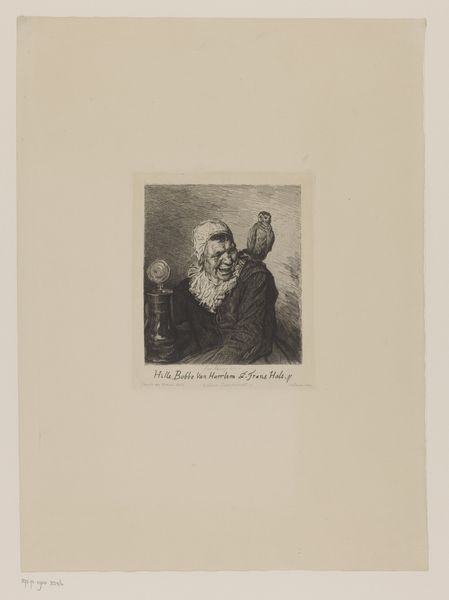
lithograph, print
#
portrait
#
lithograph
# print
#
genre-painting
#
realism
Dimensions: 507 mm (height) x 356 mm (width) (bladmaal)
Curator: What a strikingly domestic scene, don't you think? We're looking at "An Amager Woman in her Kitchen," a lithograph, dating from between 1846 and 1878. It is currently held in the collection of the SMK, the National Gallery of Denmark. Editor: Yes, it's a curious blend of the everyday and the slightly unsettling. The woman's calm demeanor, the surrounding foodstuffs…and then, bam, a skinned animal hanging right behind her! There's a very pragmatic sense about it, but something feels amiss to me. Curator: Well, consider the period. Genre scenes, depicting the lives of ordinary people, gained popularity. Lithography made art more accessible, engaging a wider audience with images reflecting their own realities. It's quite a shift from idealized historical or mythological subjects. Amager, where this woman lived, was a Danish island known for its unique traditions and costumes. It was a community somewhat separated from the mainstream of Copenhagen, so it makes sense we'd focus on a specific place with enduring folklore. Editor: The symbols are fascinating. A dead hare...fertility or sacrifice? Eggs strewn around…rebirth, potential? Even her posture is significant; she sits passively, resigned to her daily tasks. The overall sense is one of stillness, almost as if frozen within her role. There's something psychologically weighty to that image of a life unfolding within very tight parameters. It is also clearly staged for outside viewing, as if for others’ judgement, given that her space has a large frontal viewing plane. Curator: That passivity could reflect societal expectations of women during that period, contained within domestic roles, as you mentioned. But there's also dignity there, wouldn’t you say? Despite what seems confining to modern eyes, she projects strength through her steady gaze and the details that ground her in reality. The objects feel so carefully positioned, and they contribute to the cultural importance of labor. Also consider, this lithograph wasn’t just about depicting reality; it also helped solidify a particular image, or maybe stereotype, of the Amager community within the broader Danish identity. This, too, played its part in forming what constituted ‘Danishness.’ Editor: You’re right. Looking again, there’s an undeniable self-possession. It really reflects how images operate—simultaneously personal and political, revealing both individual stories and the broader cultural narratives that shape them. Curator: A subtle interplay between representation and the represented. A glimpse into a time, a place, and a way of life. Editor: Indeed. Now, if you will excuse me, I suddenly have an unusual craving for roast hare!
Comments
No comments
Be the first to comment and join the conversation on the ultimate creative platform.
